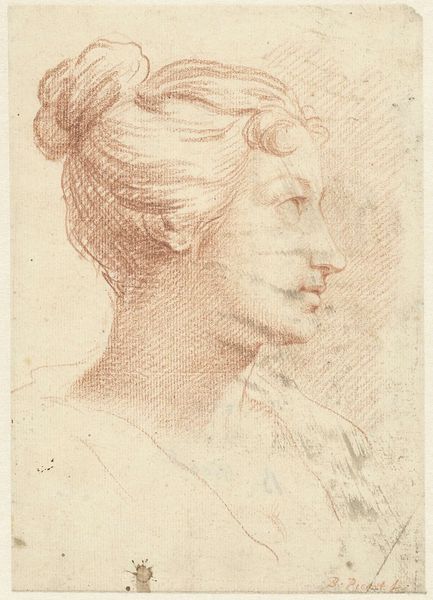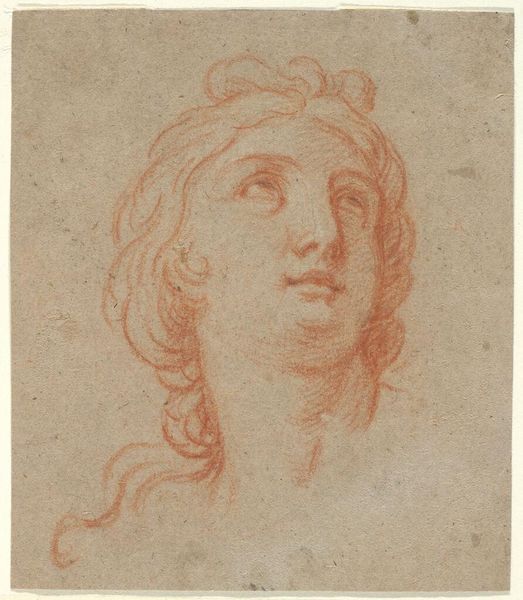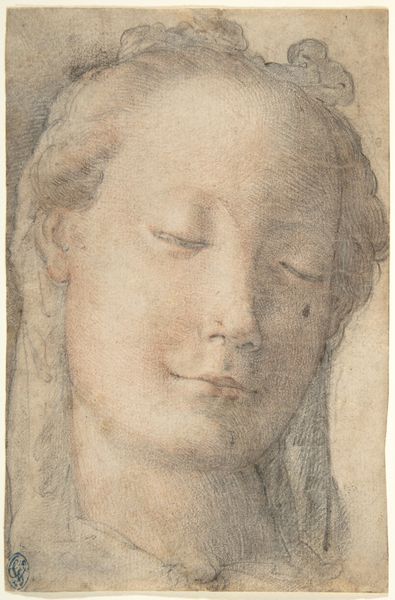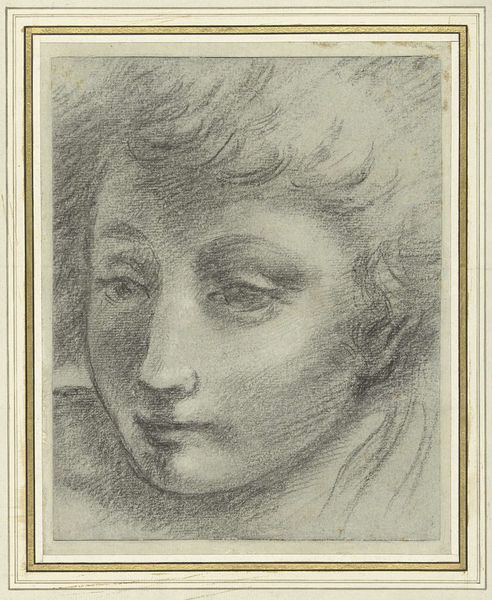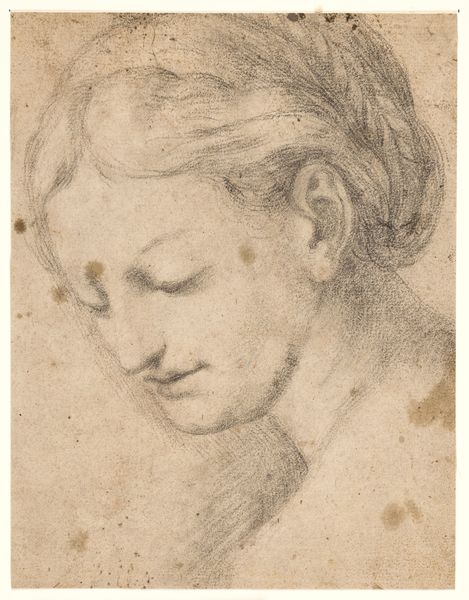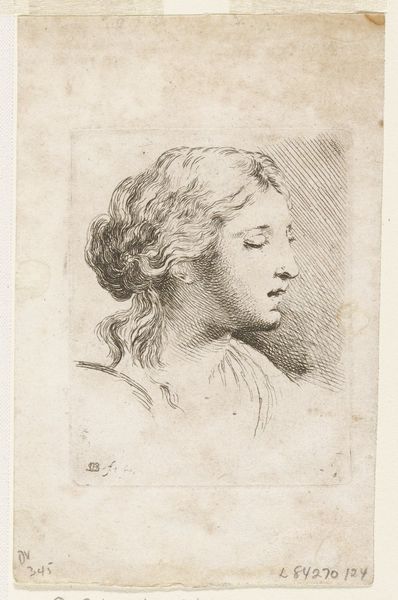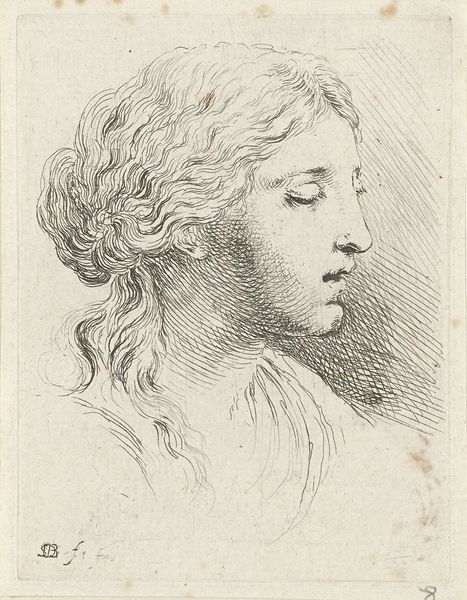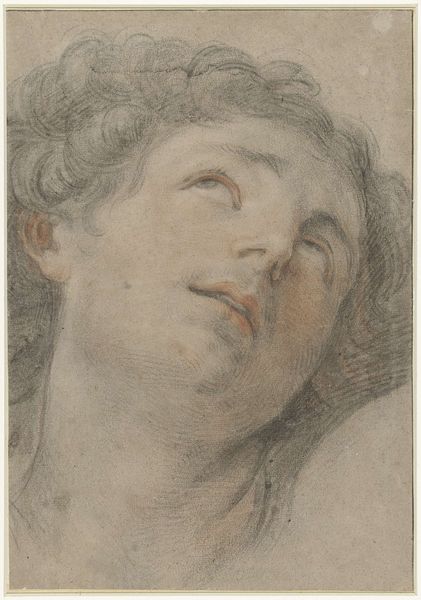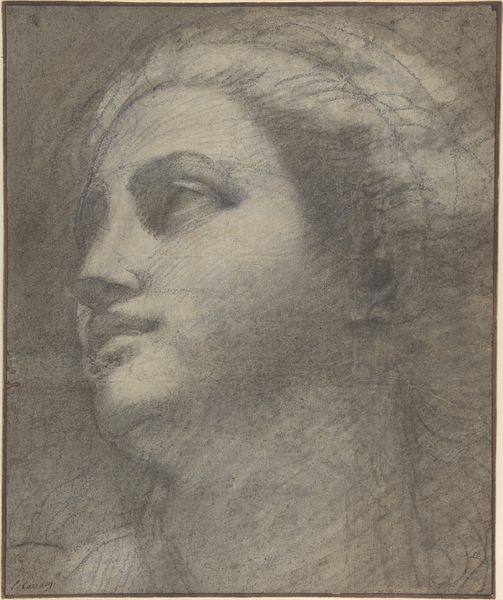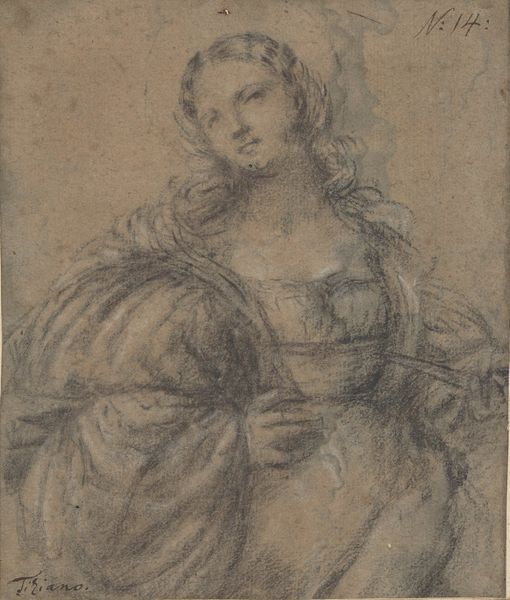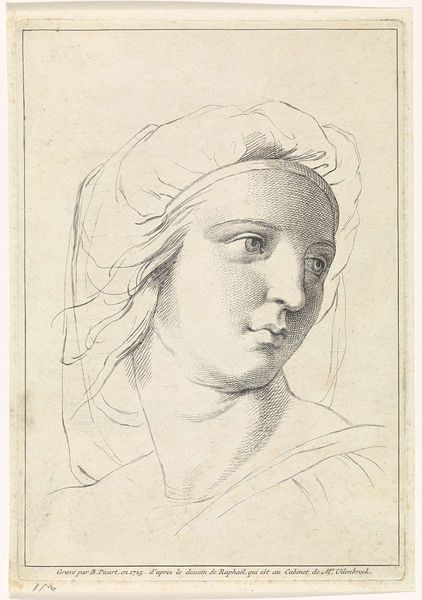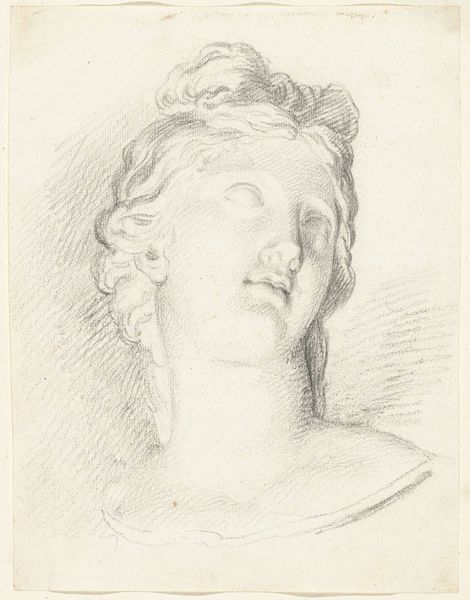
drawing, paper, ink, pencil, charcoal
#
portrait
#
pencil drawn
#
drawing
#
charcoal drawing
#
mannerism
#
paper
#
ink
#
pencil drawing
#
pencil
#
charcoal
Dimensions: height 373 mm, width 295 mm
Copyright: Rijks Museum: Open Domain
Editor: We're looking at "Head of a Woman," a drawing by Parmigianino from the 1530s. It's rendered in pencil, charcoal, and ink on paper. The face seems serene, almost melancholic. What do you see in this piece beyond the technical skill? Curator: Beyond the undeniable mastery of Parmigianino’s hand, I see a fascinating reflection of the societal constraints placed upon women during the Renaissance. Note the idealized beauty, the averted gaze. It speaks to the limited roles women were allowed to occupy – often seen as objects of beauty, passive and demure. Does this idealized form align or conflict with contemporary discussions around the female gaze, in your opinion? Editor: That's an interesting point. I guess I hadn’t considered it within that context. I was more focused on the visual aspect – the soft lines and shading creating this almost dreamlike quality. Curator: Exactly! The “dreamlike quality,” as you put it, isn't accidental. It's Mannerist, designed to evoke a specific feeling. But we can’t separate that aesthetic choice from the prevailing ideologies. How does this depiction uphold or challenge, say, the religious iconography of the era which also shaped perceptions of women? Editor: I suppose it upholds it, as the religious women are also idealized and perhaps meek? But what does that tell us today? Curator: It challenges us to critically examine these representations, to acknowledge the power dynamics inherent in how women have been, and continue to be, depicted. The artist's intention may be lost, but this can create fresh conversations. How do these past interpretations and intentions influence contemporary narratives about female agency and representation? Editor: I see what you mean. Thinking about it this way makes the drawing much more powerful. Thanks! Curator: My pleasure. This is how art keeps living - we allow art history to meet with contemporary theory!
Comments
No comments
Be the first to comment and join the conversation on the ultimate creative platform.
